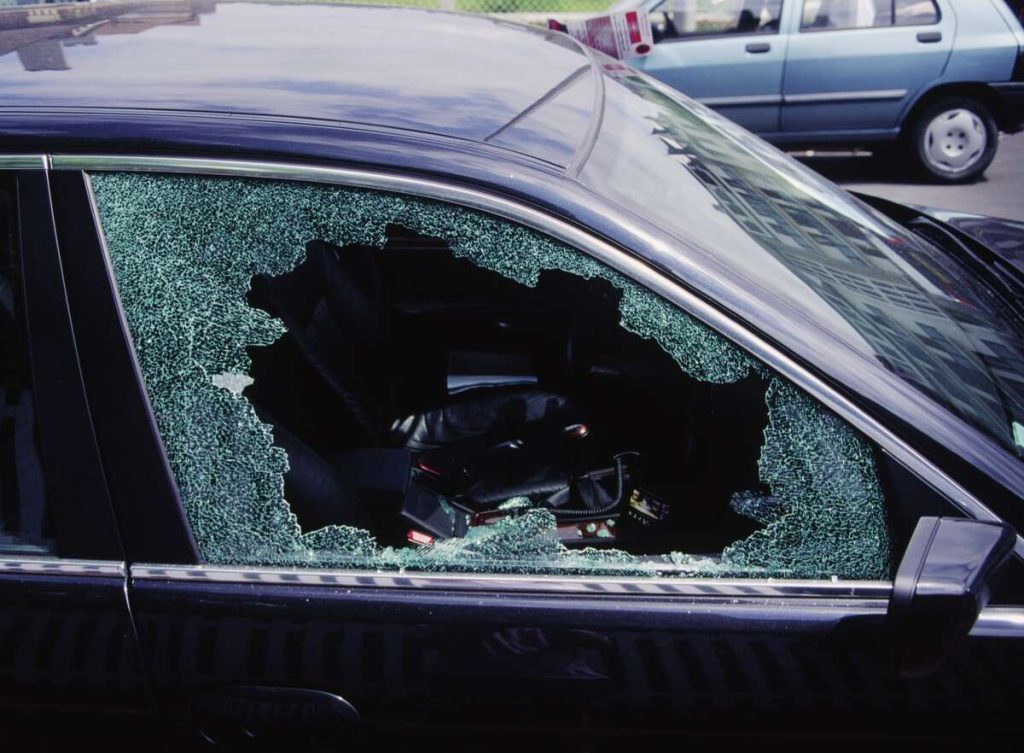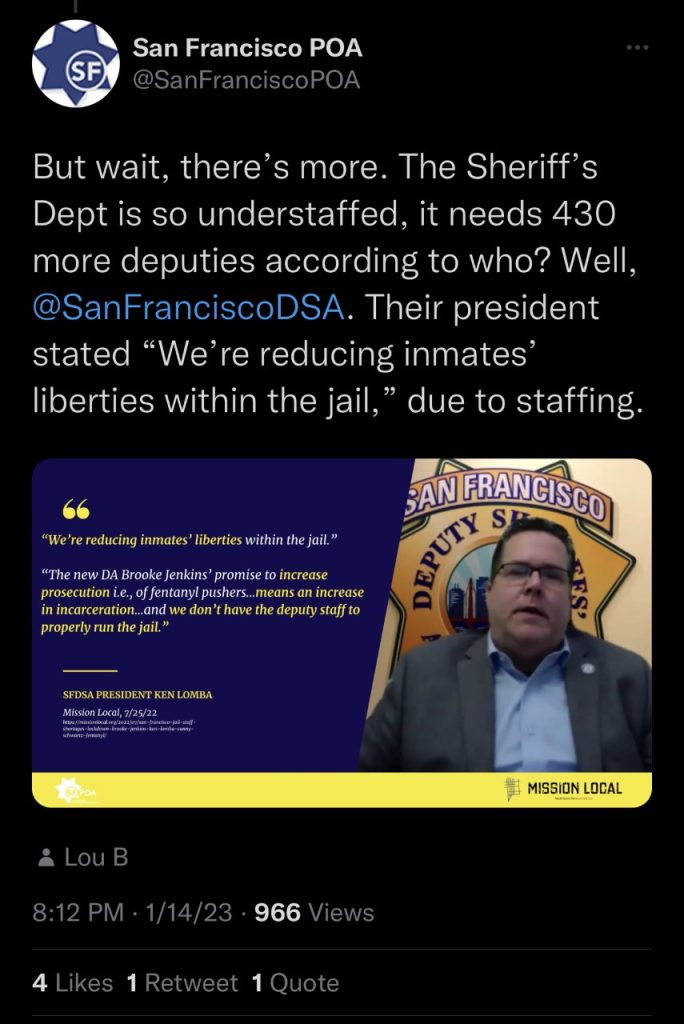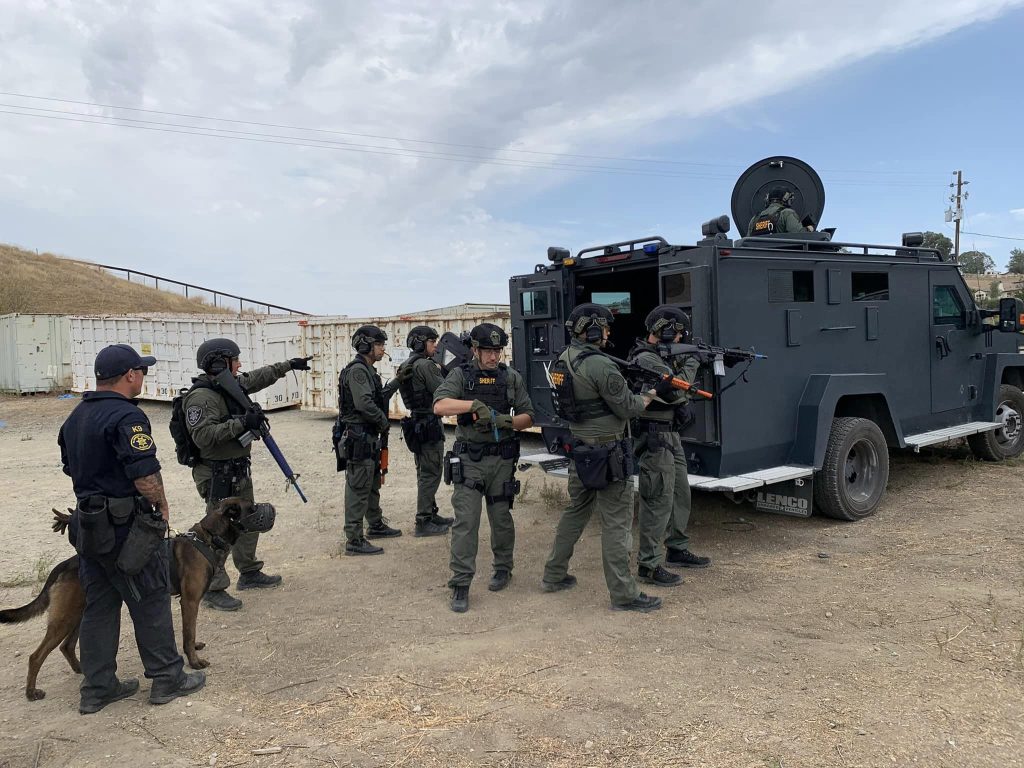PRESS RELEASE
Mayor Breed’s budget – released yesterday –worsens the unconstitutional conditions of San Francisco County Jails at San Bruno and at 7th Street for inmates’; conditions which cause long term chronic illness, and increases the lack of safety for both inmates and deputies. The City is currently being sued for these unconstitutional conditions. Both the San Bruno Jail (County Jail 3) and the 7th Street Jail (County Jail 2) are in violation of Building Code, Title 24, and cannot meet California Regulations. Staffing is already woefully short, forcing the jail to regularly lockdown all prisoners, denying inmates out of cell time, and creating in essence solitary confinement. This is all unconstitutional. Recently the Mayor denied a longevity proposal that would retain needed deputies that are now going to retire but gave longevity incentives to Police and Fire. Yet, Mayor Breed’s budget cuts another 3% off the Sheriff’s budget, while increasing the police budget by 9%. The increase in police hiring is to encourage new arrests. New arrests will increase the inmate population and any increased inmate population will only make the unconstitutional conditions at County Jails worse.
Right now, we have inmates who have been incarcerated for years. At least 60 inmates have been incarcerated for over 4 years. These jails have no outdoor facilities, and so all inmates are housed 24/7 under fluorescent lights. With lockdowns, inmates are forced inside their cell without exercise, without showers, without meaningful human interaction and contact, at times for 24 hours or more. Studies show that forced isolation is one of the worst things that can happen to inmates. Stressed out and mentally ill inmates are a danger to themselves and to deputies.
The lawsuit, Norbert v. CCSF , 3:19-cv-02724 is set for trial on August 8, 2023. San Francisco has no defense for why our jails violate the building code. And the plaintiffs in Norbert claim that denying human beings – long term – outdoor sunlight causes chronic illness, including diabetes. One of the plaintiffs, M. Brackens has developed diabetes while incarcerated in San Francisco County Jail.
The San Francisco Deputy Sheriff’s Association wants to do our job, and do it in a way that treats inmates humanely. The Sheriff’s Department Mission Statement says that the Sheriff is committed to the “constitutional detention” of inmates. The Mayor needs to allocate enough funding so that all inmates receive constitutional conditions of confinement.
We were forced to close 850 Bryant Street because it was so dilapidated that there were regular raw sewage spills in jail cells. That cost the City $2.1 million in a lawsuit.
San Francisco needs to provide jails that meet all building code and constitutional standards. And the Sheriff’s Department cannot do so, if the Mayor keeps cutting the Sheriff’s budget so there’s not enough staffing, and sufficient capital investment in the jails themselves so that the jails meet constitutional standards.
Ken Lomba
President
San Francisco Deputy Sheriffs’ Association
415-696-2428

 Step 2: Get to Know Your Neighbors Building a neighborhood watch group starts with getting to know your neighbors. Take the time to introduce yourself to your neighbors and build relationships with them. This can be done through the Nextdoor app by sending messages or posting introductions in the neighborhood feed. Building a sense of community and trust among your neighbors is crucial for the success of your neighborhood watch group.
Step 2: Get to Know Your Neighbors Building a neighborhood watch group starts with getting to know your neighbors. Take the time to introduce yourself to your neighbors and build relationships with them. This can be done through the Nextdoor app by sending messages or posting introductions in the neighborhood feed. Building a sense of community and trust among your neighbors is crucial for the success of your neighborhood watch group.


